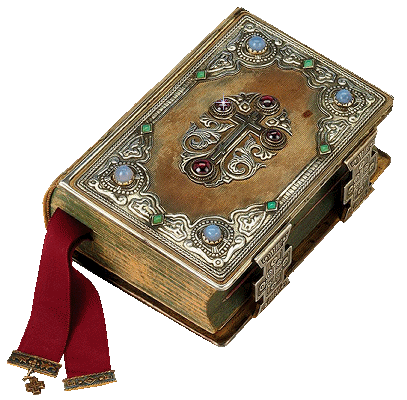 |
Orthodox Outlet for Dogmatic Enquiries | Digital Books |
|---|
UNIA: The Face and the Disguise
5. The genesis of Unia
The view that the genesis of the idea of Unia took place in the 13th century has nowadays become fully accepted. This view is based on the very accurate observation that a distinction must be made between the conception of the idea and its gradual realization, up until the point in time that the name “Unia” came to denote a specific community of Eastern Christians with an affiliation to Rome. According to a mostly improbable view, the first Uniates were the “Unionists” of Byzantium/Romania following the Schism, otherwise referred to as the “Latin-minded”.
But if Uniate communities appeared in the 16th century as the fruits of specific proselytizing actions by Rome, this does not mean that it is correct to say that the Uniate idea was just as recent. According to M. Gideon, the idea of Unia had appeared before 1204; a Uniate community however had appeared in the time of Michael Palaiologos (after 1204). But it is a fact that the Crusaders of the 4th Crusade had, pursuant to the Sack of Constantinople (1204), already promoted the idea of Unia and had in fact proceeded to put it into practice.
According to the ever-memorable historian, Archmandrite Basil Stefanides, the concept of "Unia" is observed for the first time in the 4th Lateran Synod (1215). Pope Innocent III – a dynamic, but also secularly oriented figure – was the spiritual father of Unia but also of the Holy Inquisition, since he was also endowed with an “ecclesiastic” recognition. It was only a few years before, (1204) that Constantinople had been sacked and destroyed by the hordes of Frankish crusaders, with the blessings and the support of that same Pope. Whatever the power of weapons and forced Latinization had not achieved, the method of Unia had undertaken to achieve, acting as a mechanism of deception and a “Trojan Horse” among the Christians of the East.
The text of the relative canon is as follows: “If in a certain territory there live various nations with various languages and ecclesiastic rites, the bishop should elect worthy men, who will perform the divine service for each single nationality, in its own language and rite.” According to the ever-memorable professor John Karmiris, it was along the same spirit that the Bull of Pope Innocent IV (1243-1254) was drafted in 1254, which again accepted the Easterners’ customs (with the prospect of gradually abolishing them), followed by the complete Latinization of the people thereafter.
The first true Uniates were the unionists of Byzantium, who had signed and accepted the pseudo-synod of Florence (1439), under the illusion that they had retained their continuance and their orthodox tradition. It should be noted here that Unia does not only serve the interests of the Papacy (inasmuch as it facilitates its infiltration); it also provides an alibi to our own, “westernizing” unionists, so that they can avoid being branded as traitors of local traditions. Under the pretext of having preserved external forms, they are actually masking the betrayal of their traditions and nationality.
During its historical implementation Unia linked itself to a dogmatic minimalism; that is, to Rome’s demand that they accept the Papal dogmas (primacy and infallibility). This meant an acceptance of the Papal institution, which constitutes the absolute basis of the Papist edifice. That alone is evidence enough of how far away the Papacy is from being called a Church. Of course, as already mentioned, Uniates have in the long run consented to all the dogmas of the Latin “Church”, and have remained only formally-externally linked to Orthodox tradition. To the Papacy, salvation essentially involves the recognition of the Pope – yet another example of his anti-ecclesiastic mien. In fact, the expedience that permeates the case of the Uniates is made apparent by the fact that while the Latin clergy observes compulsory celibacy, the Uniate clergymen are permitted to marry – obviously in order to facilitate “Uniatizing”. To conclude, therefore:
The Holy Inquisition is linked to the principle of an unerring leadership (the Pope’s infallibility), which was “dogmatically” instituted by the leading scholastic of the Medieval era, Thomas Aquinas († 1274). The element underlying Papal infallibility was the Frankish interpretation and usage of Augustine’s teaching on predestination, in a secular-political context. Unia springs from the demand to impose another basic Papal dogma: the primacy of authority within the entire Christian world. This was elaborated and implemented in the 16th century, because that was when an event of tremendous significance took place: the genesis of Protestantism (1517). The Papacy now turned to the East seeking support, in the hope of balancing out its contestation in the West.
____________
Article published in English on: 13-12-2008.
Last Update: 4-11-2014.